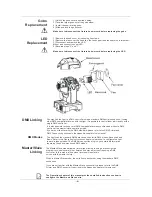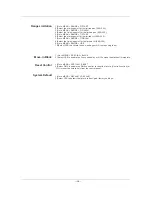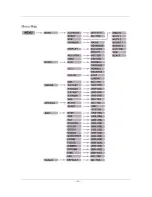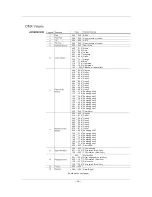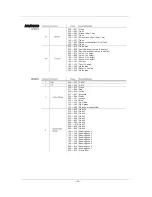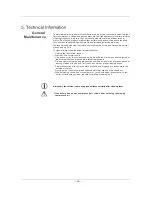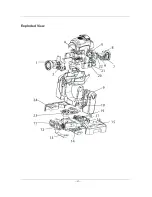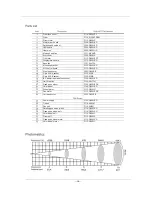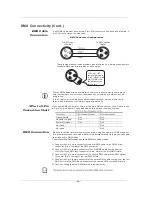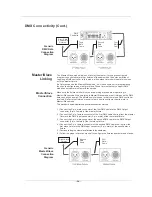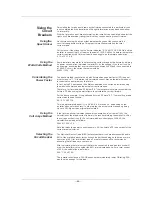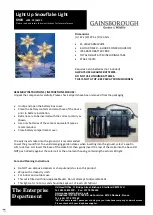
6. Appendix
DMX Primer
The DMX protocol (USITT DMX512-A) is a networking protocol that enables a universal
DMX controller device to control the features of multiple DMX compatible fixtures,
whether par cans, wash lights, moving heads, follow spots, foggers , proprietary fixture
controllers, etc.
As any other networking protocol, the USITT DMX512-A describes the physical
medium, the signals and the functions they control.
The Physical
Medium
The DMX controller connects to it associated DMX compatible fixtures using a DMX
connection. This connection consists of a series of jumps between the DMX controller
and the various DMX compatible fixtures, also known as a daisy chain connection. In
this type of connection, the DATA OUT of one fixture or the DMX controller connects to
the DATA IN of the next fixture, and so on.
Each DMX fixture links to the previous and next DMX fixture or controller using a DMX
cable. This type of cable consists of a section of shielded, two-conductor twisted pair
cable with one 3-pin XLR male connector on one end and a 3-pin XLR female connector
on the other end. The XLR connectors pin-out is as follows: pin 1 is the Common (shield),
pin 2 is Signal Negative (S-) and pin 3 is Signal Positive (S+).
The Signals
The DMX signal stream is unidirectional, from the DMX controller to the DMX
compatible fixtures. These signals conform to the EIA-485 standard.
The Functions
Each DMX channel can have any unitary value in the 000~255 range. Each DMX
compatible fixture uses as many consecutive DMX channels as features the user can
control. The sequential numbers assigned to each DMX channel (1~512) are also
known as DMX addresses.
The function each DMX channel has and the results of assigning a value to each
depend on each controlled fixture. Some fixtures only use a single DMX channel,
while others may require 15 or more DMX channels to control all their functions.
Personalities
The DMX fixture configuration consists in determining how many channels each
fixture will need as well as assigning the corresponding DMX channels to each
fixture in order to size correctly the DMX controller.
Most DMX fixtures use multiple personalities, each of them requiring a different number
of channels, depending on the number of features it enables. The number of DMX
channels used by a fixture may vary from only one (usually the general dimmer control)
to 15 or more, as mentioned above.
When the job does not require using all the fixture's capabilities, the user can select a
more basic personality (less channels), thus allowing the DMX controller to
accommodate more DMX fixtures.
Starting
Address
The stream of DMX signals consists of 512 individual, sequential channels that form
a frame. The DMX controller constantly sends frames of DMX signals to the DMX
connection, even if not all of the 512 channels are in use. Because of this constant
transmission method, there can be only one DMX controller in a DMX connection.
Otherwise, the DMX signals sent by one controller would interfere with the signals
sent by the other controller(s).
For the DMX controller to control each DMX fixture, the user must first configure each
fixture's personality. This will determine the number of required channels to control the
fixture. Each channel will have a DMX address assigned to it. However, since assigning
a particular DMX address to each channel is impractical, the user will only need to
configure on each fixture the DMX address that corresponds to the fixture's Channel 1.
This is the fixture's starting address. The fixture will automatically assign the other
channels to the subsequent DMX addresses.
Once this assignment is complete, and based on the number of channels it uses, the
fixture will respond to the DMX signals sent to the range of DMX channels that begins
with the starting address.
For example, a fixture that uses six DMX channels and whose starting address is 100,
will accept DMX data sent by the DMX controller to channels 100, 101, 102, 103, 104,
and 105.
--21--
Summary of Contents for MH LED 60D
Page 14: ...11...
Page 20: ...Exploded View 17...

